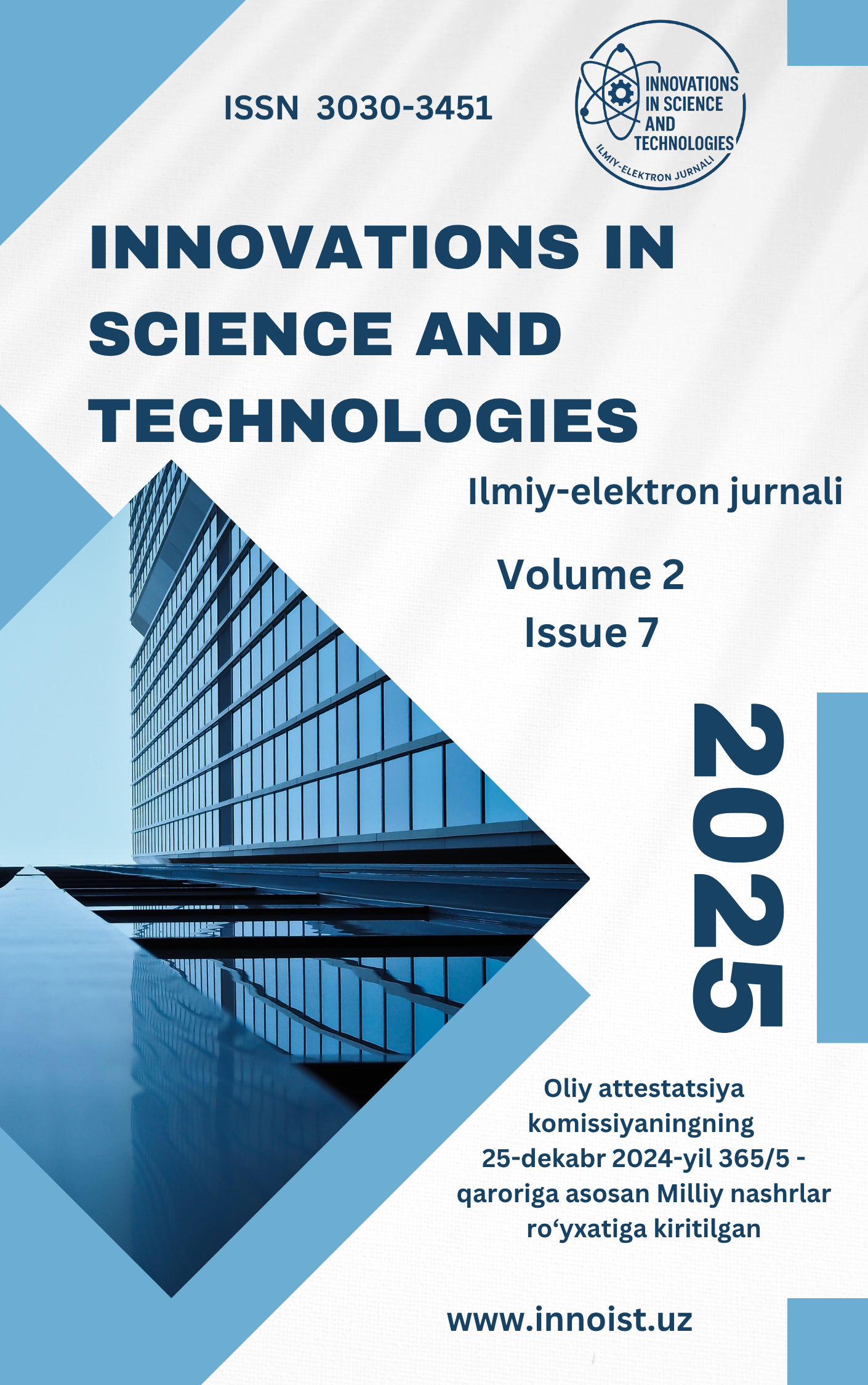К ДИСКУССИОННЫМ ВОПРОСАМ МЕТОДОВ ПРАКТИЧЕСКОГО ИЗМЕРЕНИЯ ТЕНЕВОЙ ЭКОНОМИКИ
Keywords:
скрытая экономика, теневая экономика, методы измерения теневой экономики, прямые методы, косвенные методы, методы моделирования, метод экспертных оценок.Abstract
В статье рассмотрены дискуссионные вопросы методов практического измерения уровня теневой экономики в новых условиях трансформации государственных мер по борьбе с теневой экономикой, изучены влияющие факторы функционирования теневой экономики, проанализированы преимущества и недостатки основных методов измерения уровня теневой экономики, в соответствии с чем выявлены направления, по которым государство может активно влиять на процесс борьбы с теневой экономикой. Значительное внимание в статье уделяется вопросам совершенствования налоговых методов расчета величины теневой экономики.
Downloads
References
1. Указ Президента Республики Узбекистан от 28 января 2022 года № ПФ-60 «Стратегия развития Нового Узбекистан на 2022-2026 годы».
2. Указ Президента Республики Узбекистан от 11сентября 2023 года № УП-158 «О Стратегии “Узбекистан-2030”».
3. Постановление Президента Республики Узбекистан от 3 августа 2020 года № ПП- 4796 «О мерах по дальнейшему совершенствованию и развитию национальной системы статистики Республики Узбекистан».
4. Указ Президента Республики Узбекистан от 30 октября 2020 года № УП 6098 «Об организационных мерах по сокращению теневой экономики и повышению эффективности деятельности налоговых органов».
5. Lubell H. The Informal Economy in the 1980s and 1990s. Development Centre of the Organization of Economic Co-operation and Development, Paris, 1991, 128 p.
6.Smith P.M. Assessing the Size of the Underground Economy: The Statistics Canada Perspective. In: Lippert O., Walker M. (Eds). The Underground Economy: Global Evidence of Its Size and Impact. Vancouver, The Fraser Institute, 1997, pp. 11–36.
7.Williams C.C. Evaluating the Magnitude of the Shadow Economy: A Direct Survey Approach. Journal of Economic Studies, 2006, vol. 33, iss. 5, pp. 369–385.
8.Feige E.L. A Re-Examination of the 'Underground Economy' in the United States: A Comment on Tanzi. IMF Staff Papers, 1986, vol. 33, no. 4, pp. 768–781.
9. O'Higgins M. Assessing the Underground Economy in the United Kingdom. In: Feige E.L. (Ed.). The Underground Economies: Tax Evasion and Information Distortion. Cambridge, Cambridge University Press, 1989, pp. 175–195
10. Bhattacharyya D.K. An Econometric Method of Estimating the 'Underground Economy'. United Kingdom (1960–1984): Estimates and Tests. Economic Journal, 1990, vol. 100, no. 402, pp. 703–717.
11. Dell'Anno R., Halicioglu F. An ARDL Model of Unrecorded and Recorded Economies in Turkey. Journal of Economic Studies, 2010, vol. 37, iss. 6, pp. 627–646.
12. Feige E.L. Currency Velocity and Cash Payments in the U.S. Economy: The Currency Enigma. MPRA Paper, 1989, no. 13807, pp. 1–40
13. Lyssiotou P., Pashardes P., Stengos T. Estimates of the Black Economy Based on Consumer Demand Approaches. The Economic Journal, 2004, vol. 114, iss. 497, pp. 622–640.
14. Calzaroni M. The Exhaustiveness of Production Estimates: New Concepts and Methodologies. Proceedings of the International Conference on Establishment Surveys, Buffalo, USA, 2000, pp. 1–10.
15. Nastav B., Bojnec S. The Shadow Economy in Bosnia and Herzegovina, Croatia, and Slovenia: The labor approach. Eastern European Economics, 2007, vol. 45, iss. 1, pp. 29–58.
16. Davidescu A.A. Estimating the Size of Romanian Shadow Economy. A Labor Approach. Journal of Social and Economic Statistics, 2014, vol. 3, no. 1, pp. 25–37.
17. Schneider F., Buehn A., Montenegro C.E. Shadow Economies All over the World: New Estimates for 162 Countries from 1999 to 2007. World Bank, Policy Research Working Paper Series, 2010, no. 5356, pp. 1–54
18. Quintano C., Mazzocchi P. The Shadow Economy beyond European Public Governance. Economic Systems, 2013, vol. 37, no. 4, pp. 650–670.
19. Schneider F., Savasan F. DYMIMIC Estimates of the Size of Shadow Economies of Turkey and of Her Neighboring Countries. International Research Journal of Finance and Economics, 2007, iss. 9, pp. 126–143.
20. Orsi R., Raggi D., Turino F. Size, Trend, and Policy Implications of the Underground Economy. Review of Economic Dynamics, 2014, vol. 17, iss. 3, pp. 417–436.
21. Gomis-Porqueras P., Peralta-Alva A., Waller C.J. Quantifying the Shadow Economy: Measurement with Theory. Federal Reserve Bank of St. Louis, Working Paper Series, 2011, no. 2011-015A, pp. 1–32
22. Draeseke R., Giles D.E.A. A Fuzzy Logic Approach to Modelling the New Zealand Underground Economy. Mathematics and Computers in Simulation, 2002, vol. 59, iss. 1-3, pp. 115–123.
23. Ene C.-M., Hurduc N. A Fuzzy Model to Estimate Romanian Underground Economy. Internal Auditing and Risk Management, 2010, vol. 2, iss. 18.24. Maršić K., Oreški D. Modelling the Size of Underground Economy in Croatia: Fuzzy Logic Approach. Central European Conference on Information and Intelligent Systems, Varaždin, Croatia, 2014, pp. 70–77.
Downloads
Published
Issue
Section
License

This work is licensed under a Creative Commons Attribution 4.0 International License.
License Terms of our Journal











